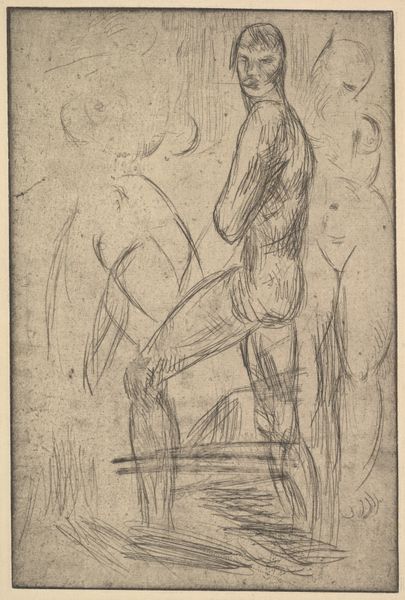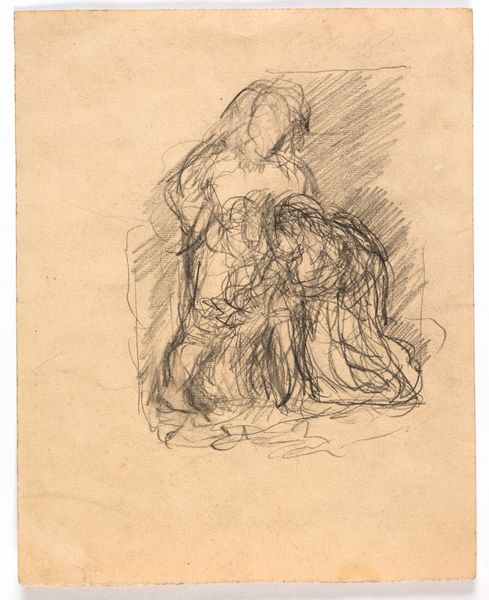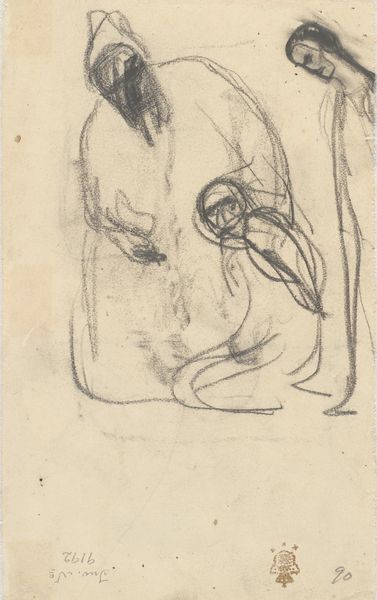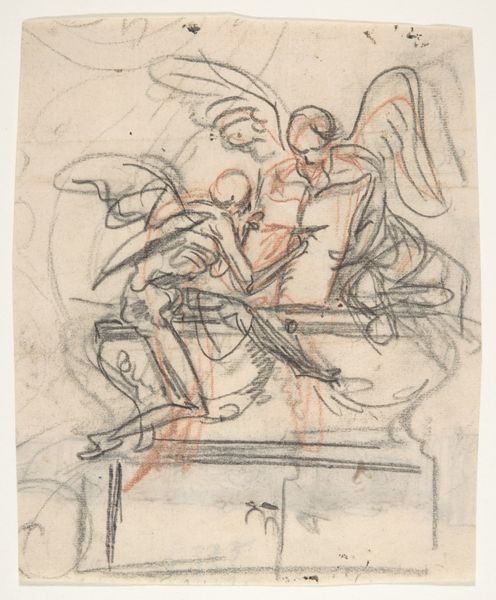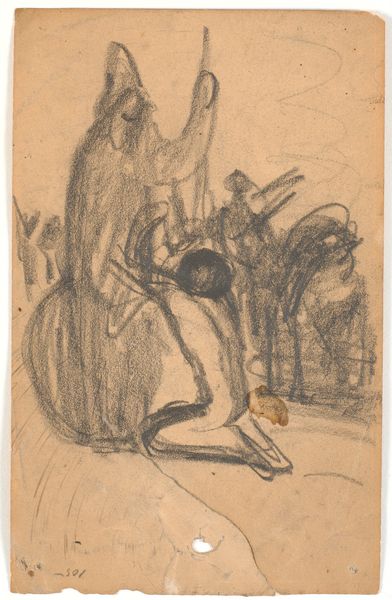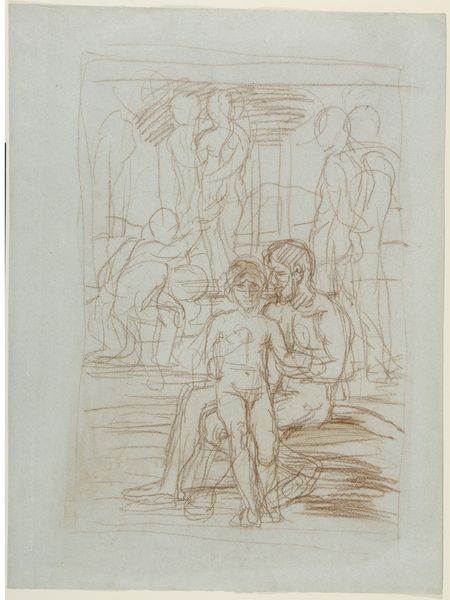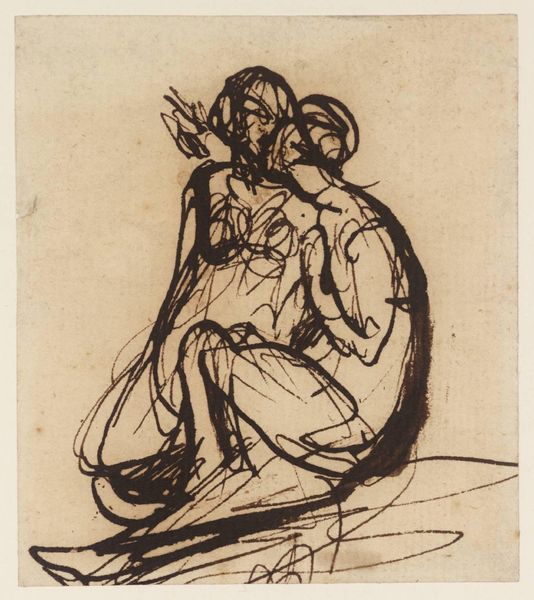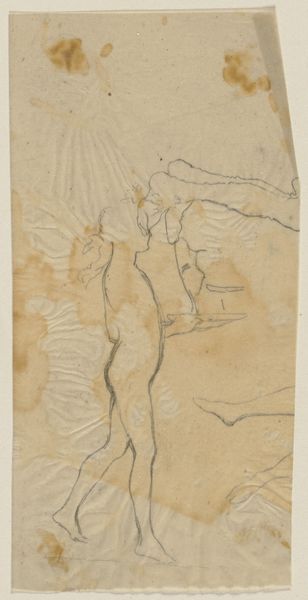
drawing, pencil
#
drawing
#
ink drawing
#
narrative-art
#
pen sketch
#
pencil sketch
#
figuration
#
pencil
Dimensions: 220 mm (height) x 132 mm (width) (bladmaal)
Editor: This is Poul S. Christiansen's "Kristi opstandelse," or "Christ's Resurrection," created in 1897 using pencil. I find the sketchiness of it really intriguing, the figures are barely there. What can you tell me about how it was received at the time? Curator: This pencil drawing, displayed at the SMK, offers a glimpse into the socio-religious climate of the late 19th century. Remember, art wasn't created in a vacuum; the period was rife with societal anxieties and shifts in religious belief. Does the unfinished quality resonate with any potential commentary on institutional faith, do you think? Editor: Possibly? The fact that it's "unfinished" maybe makes a statement, like doubt. Curator: Exactly. Consider the public role of art then. Religious art had long served to reinforce doctrine and provide visual aids to faith. But this sketch? It's hesitant. Is this meant for public devotion or something more private and questioning? The ghostly figures suggest a questioning of faith, perhaps reflecting the rise of secularism or a more individualized spirituality. Editor: That makes me wonder about the context of the museum displaying it now, versus then. It seems more like an artifact now? Curator: Precisely. The museum setting elevates the sketch to an object of artistic and historical interest. Its value shifts from devotional aid to cultural commentary, allowing us to examine evolving public perceptions of faith and art. What do you think? Editor: It's interesting how context really changes everything. I thought I was just seeing a preliminary sketch, but now I’m considering the social and cultural forces that were at play. Curator: Indeed, and that's the power of understanding art's historical role!
Comments
No comments
Be the first to comment and join the conversation on the ultimate creative platform.
